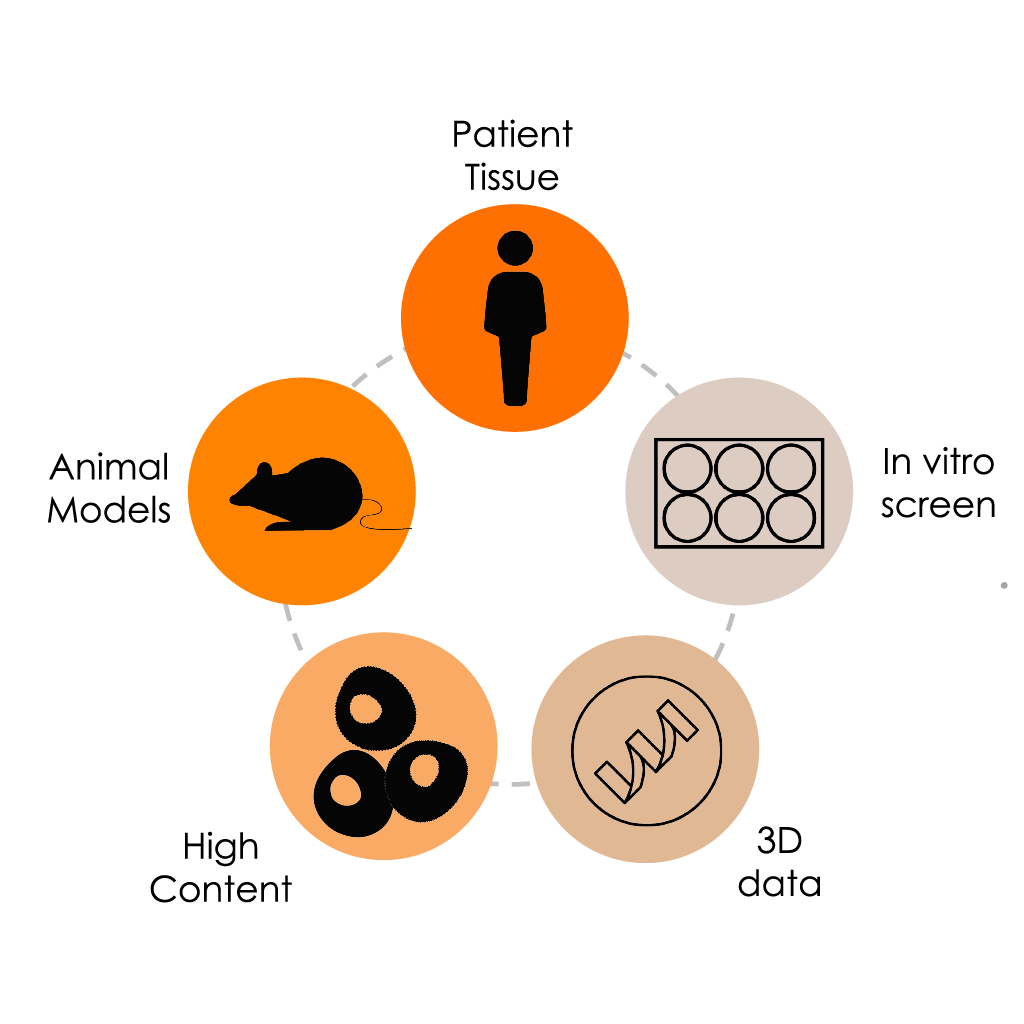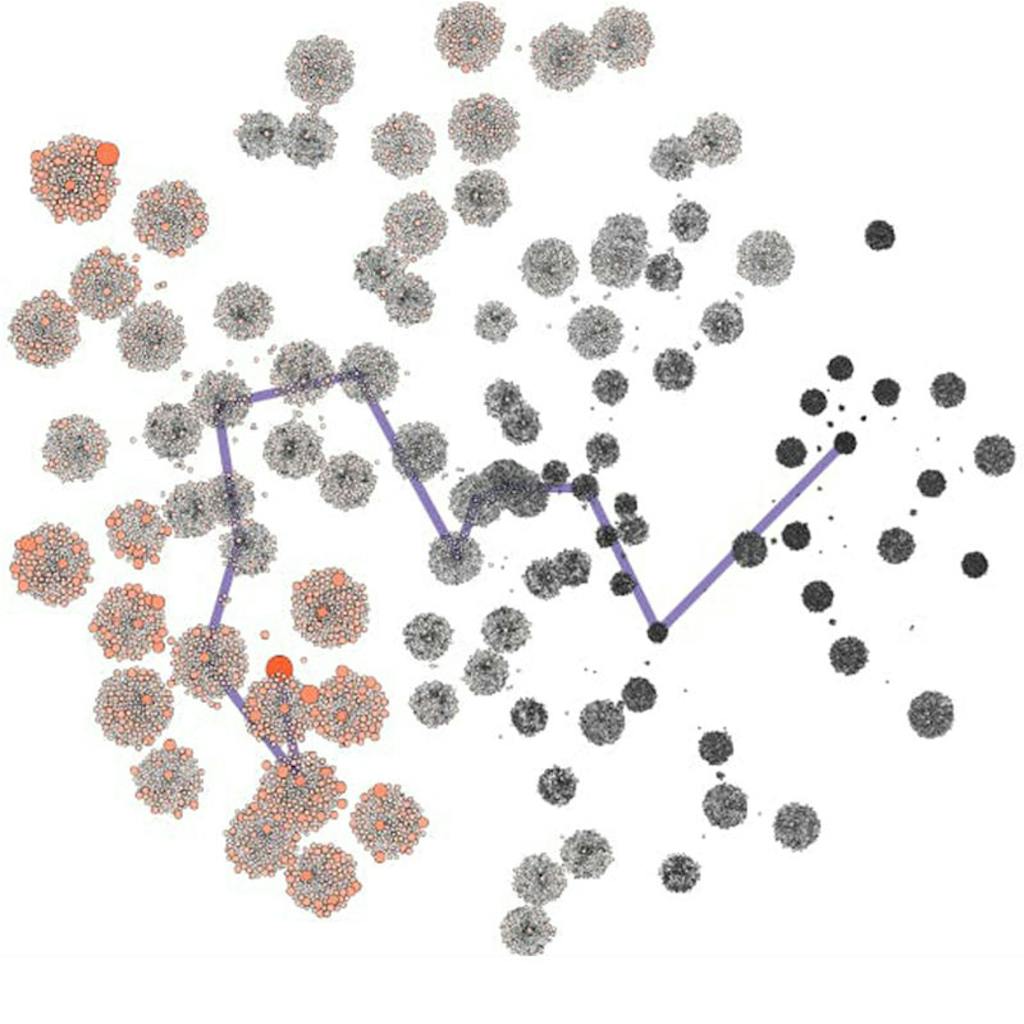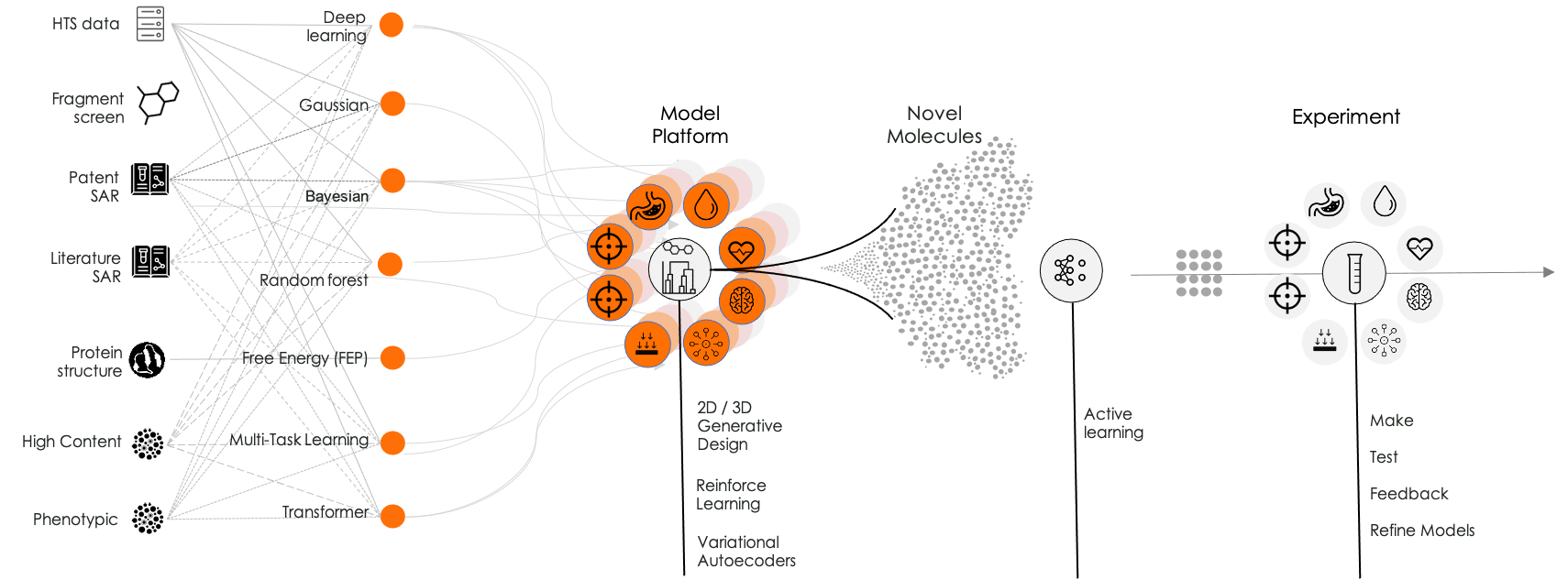Generative Design can operate in two and three dimensions. In the following video with use a 3D example to visually demonstrate evolution within a protein structure binding site.
Millions of compounds are evolved during each design cycle and from these we synthesise and test key compounds of highest potential interest. Experimental data not only gives compound specific feedback but is used to assess and refine the predictive power of the model platform.
As a project progresses, the system moves from an exploration phase to an exploitation strategy. By now molecules are consistently fulfilling key project goals and from these we select a candidate molecule suitable for preclinical testing.



